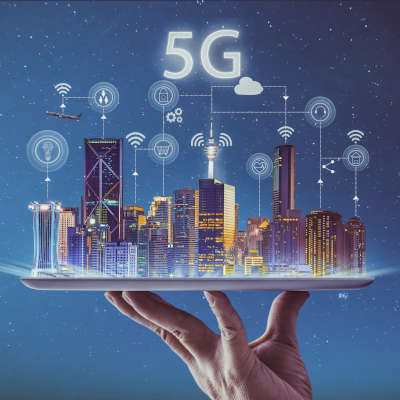Everybody’s waiting to see what the fifth generation of wireless communications will bring to technology. 5G is expected to bring a whole new level of automation to society and business, especially with the Internet of Things; billions of smart devices and services that are creating a whole new economy. Let’s take a look at 5G’s current state, its capabilities, and what it means for the Internet of Things.
5G at the Start of 2021
5G has been used in marketing for several years now, but telecoms didn’t start pushing out the technology until 2020. Here are three major benefits of 5G:
1. Lower latency – No more latency issues with wireless cellular applications.
2. Increased rates of transmission – Faster wireless speeds transmit more data.
3. Enhanced capacity – More IoT devices are getting 5G connectivity, so there will more exciting uses for the 5G networks.
It takes time to fully implement new technologies. Telecoms need to install infrastructure and manufacturers need to market the new devices. However it seems to be finally happening.
What 5G Means for IoT
How fast is 5G? With 5G speeds up to 7.5 Gbps or about .94 gigabytes per second, users could potentially download an average 1HD movie in about 8 to 10 seconds.
The Internet of Things is already significant, with about 26 billion devices as of 2020. With practically no latency, 5G will let IoT devices to do things that were impossible with 4G LTE. This increased speed will allow developers to produce devices that are instantly and accurately responsive to consumer’s daily needs. This changes everything.
Here are a few examples of how 5G is going to change the functionality of IoT devices:
1. Manufacturing – Manufacturers will see fantastic gains. The speed of 5G connections means business basically happens in real time. Smart technology tracks and reports data at lightening speed, so quality control, procurement, distribution, and customer satisfaction all get a massive boost.
2. Supply chain – Supply chain management requires careful oversight. IoT has been slowly improving this process, but 5G connectivity and reporting ability will seriously upgrade businesses’ ability to manage their supply chain.
3. Municipal – IoT devices are being used as automotive triggers for municipal services, which saves taxpayers a lot of money. 5G and IoT will be used in “smart cities” where water, sewer, traffic, and electricity are managed through the use of IoT control devices requiring little human oversight.
4. Autonomous vehicles – One of the most exciting IoT devices associated with a 5G upgrade is the autonomous vehicle. This is not just personal and mass transportation, but the whole shipping industry. A lot of rapidly changing data goes into keeping an autonomous vehicle safe on the road. 5G will have the speed and latency reduction to finally make it a practical solution.
5. Healthcare – 5G can handle the enormous amount of data traffic common in healthcare systems, which is sometimes crippled by the slower speeds and latency of 4G LTE connections. With gigabit speeds and almost no latency, 5G will make vital information available on demand.
The Internet of Things and 5G are both emerging technologies that promise to improve our lives. Do you think the convergence of these two technologies is significant? Drop us a line in the comments box below. Please subscribe and check our blog for news and insights about current and emerging IT.

